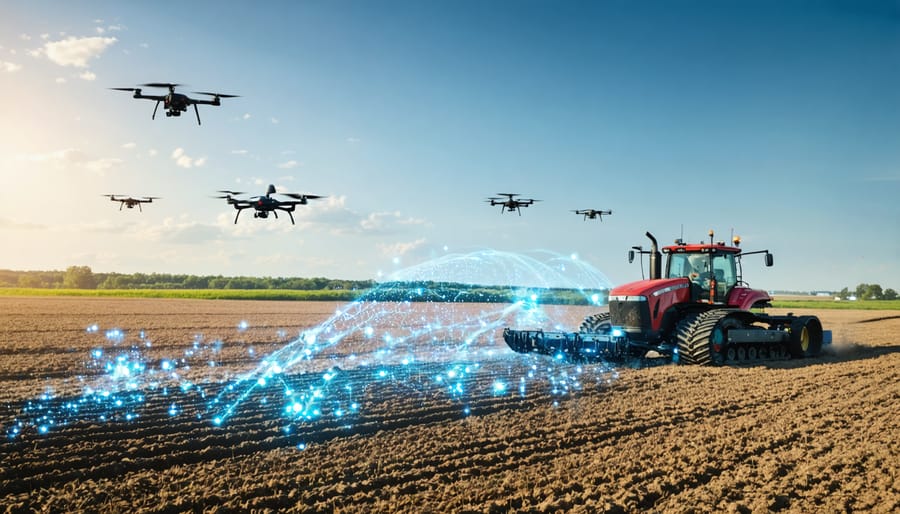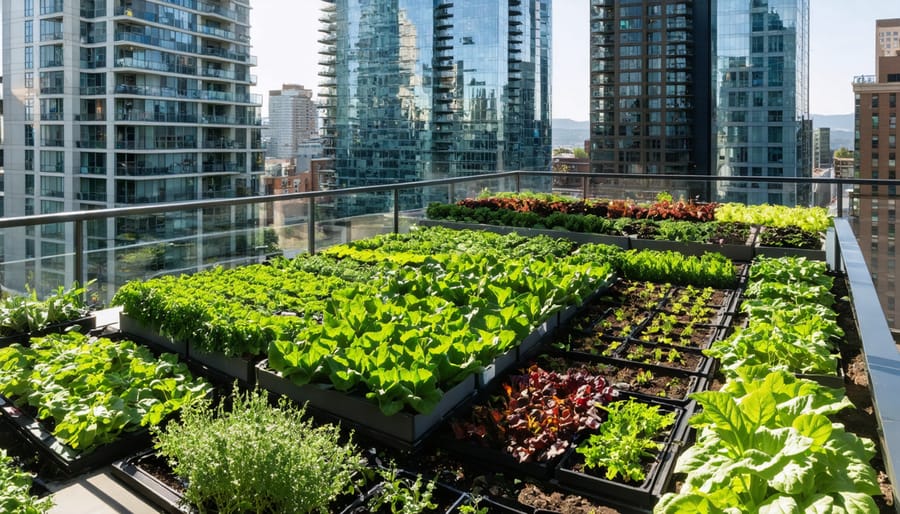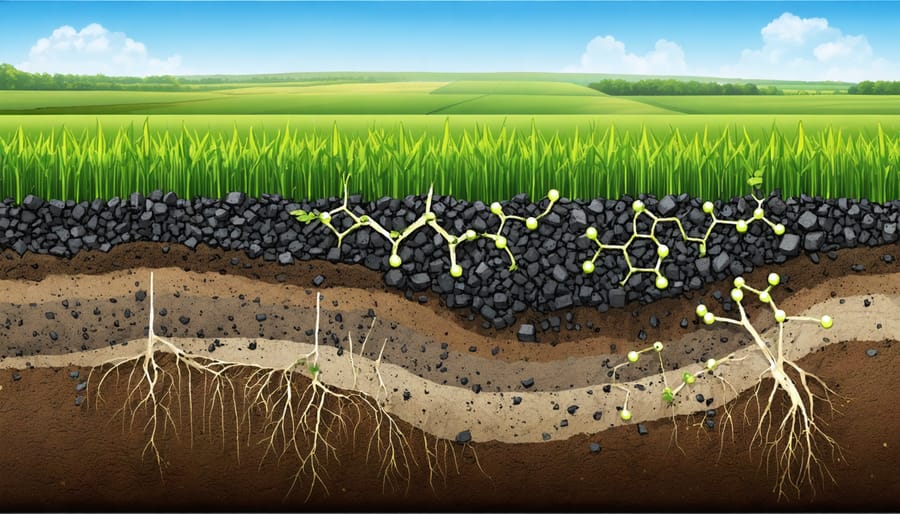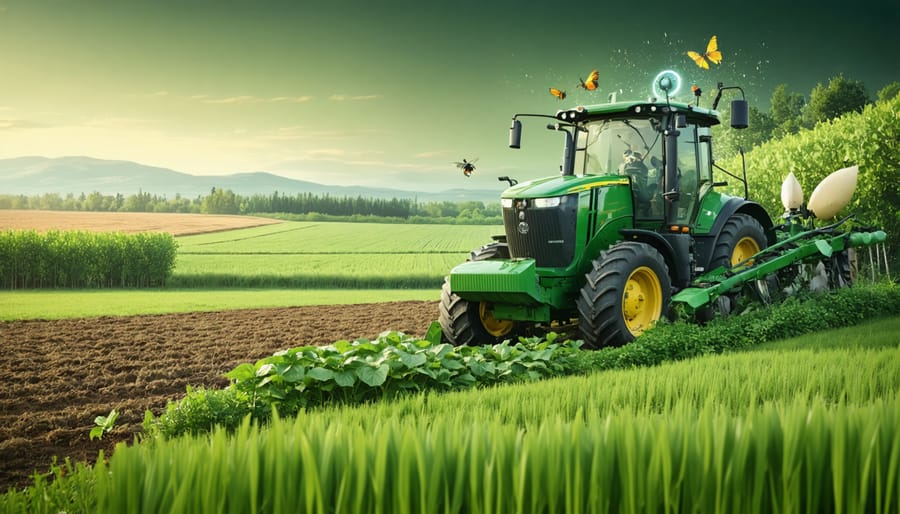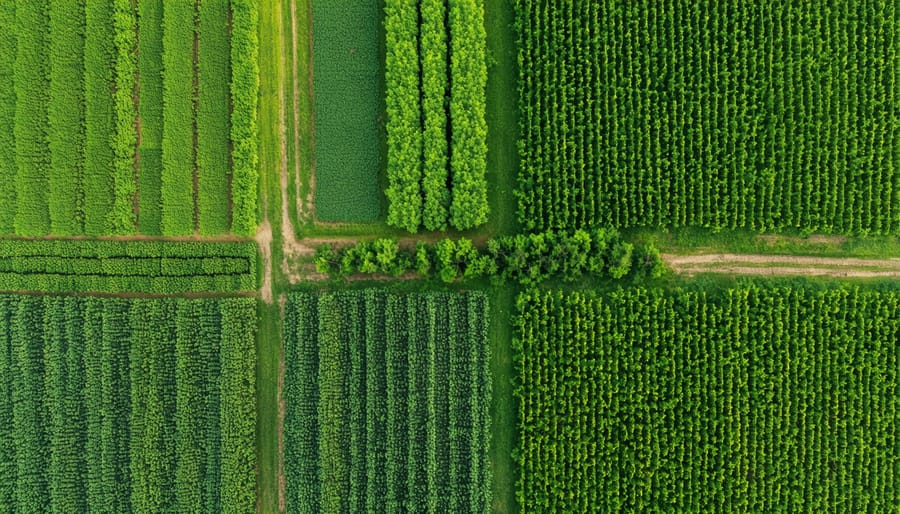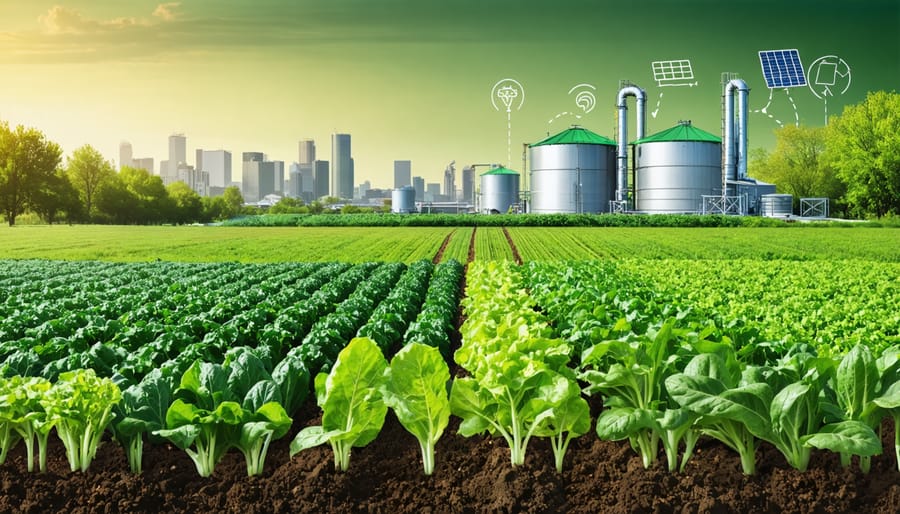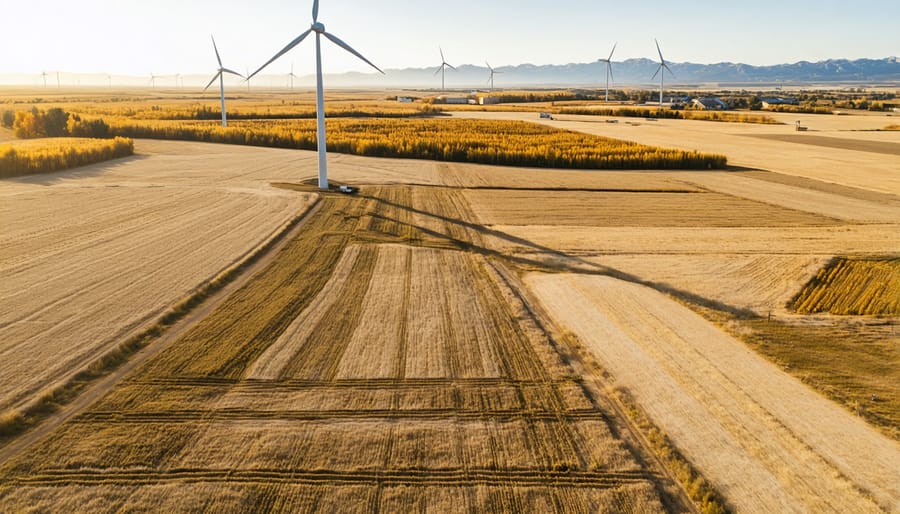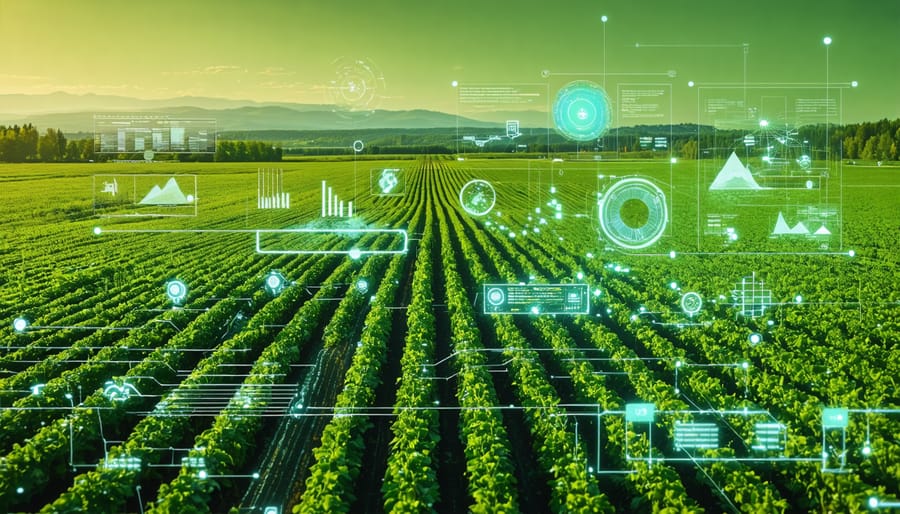Agricultural innovation stands at the forefront of feeding our growing world, revolutionizing how we cultivate, harvest, and sustain our food systems. From precision farming technologies to groundbreaking genetic research, these advancements are transforming Canadian agriculture and reshaping the future of farming across the Prairie Provinces.
Today’s agricultural innovations extend far beyond traditional machinery upgrades. They encompass smart irrigation systems that reduce water consumption by up to 30%, soil sensors that provide real-time nutrient data, and artificial intelligence that predicts optimal planting and harvest times with unprecedented accuracy. These technologies, combined with sustainable farming practices, are helping Alberta’s farmers increase yields while reducing their environmental footprint.
For Canadian producers, agricultural innovation represents the bridge between centuries-old farming wisdom and cutting-edge technology. It offers solutions to pressing challenges like climate change, labor shortages, and increasing production costs, while opening new opportunities for the next generation of farmers to thrive in an increasingly competitive global market.
What Drives Agricultural Innovation in Alberta Today
Several key factors are shaping agricultural innovation across Alberta’s diverse farming landscape. Climate change adaptation leads the charge, with farmers seeking solutions to manage increasingly unpredictable weather patterns and extended dry periods. Many producers are embracing precision agriculture technologies to optimize water usage and protect crops from extreme weather events.
Economic pressures also drive innovation, particularly as input costs continue to rise. Alberta farmers are turning to smart farming technologies that help reduce expenses while maximizing yields. Soil sensors, GPS-guided equipment, and data analytics are becoming standard tools in modern farm operations, allowing for more precise resource management.
Consumer demands significantly influence innovation directions. The growing market for sustainable and locally-produced food has sparked interest in regenerative farming practices. Alberta producers are experimenting with cover cropping, reduced tillage systems, and integrated pest management to meet these consumer preferences while maintaining profitability.
Labour shortages present another crucial challenge pushing innovation forward. With fewer people entering traditional farming roles, automated systems and robotics are gaining traction. From autonomous tractors to AI-powered crop monitoring, technology is helping bridge the labour gap while improving operational efficiency.
Environmental stewardship remains a top priority. Alberta farmers are pioneering carbon capture techniques through improved soil management practices. Many are adopting biological inputs and exploring ways to reduce chemical usage while maintaining crop health and yields.
Industry collaboration is accelerating innovation adoption. Research partnerships between farmers, academic institutions, and agricultural companies are creating practical solutions tailored to Alberta’s unique growing conditions. These collaborations often focus on developing drought-resistant crop varieties and sustainable farming methods that work in our prairie climate.
The digital revolution in agriculture continues to expand, with high-speed internet access enabling real-time decision-making through farm management software and mobile applications. This connectivity allows farmers to monitor operations remotely and make data-driven decisions that improve both productivity and sustainability.
Technology-Driven Solutions Reshaping Canadian Farms
Precision Agriculture Technologies
In recent years, precision agriculture has revolutionized farming across Alberta and beyond, offering farmers powerful tools to optimize their operations. GPS mapping technology now enables farmers to create detailed field maps with centimetre-level accuracy, helping them track soil conditions, crop health, and yield data across their land. This precision allows for targeted application of inputs, reducing waste and environmental impact while maximizing productivity.
Drone technology has become increasingly accessible to Canadian farmers, providing regular aerial monitoring of crops throughout the growing season. These eyes in the sky can quickly survey hundreds of hectares, identifying issues like pest infestations, irrigation problems, or nutrient deficiencies before they become visible from the ground. Many Alberta farmers are using drones equipped with multispectral cameras to create detailed vegetation index maps, helping them make informed decisions about crop management.
Smart sensors are transforming how we monitor field conditions. These devices measure crucial factors like soil moisture, temperature, and nutrient levels in real-time, sending data directly to farmers’ smartphones or computers. For example, several grain farmers in central Alberta have installed networks of soil moisture sensors that help them optimize irrigation scheduling and reduce water usage by up to 30%.
When integrated, these technologies create a comprehensive farm management system that supports data-driven decision-making. Local agricultural technology providers offer training and support to help farmers implement these tools effectively, ensuring that precision agriculture benefits farms of all sizes across our province.
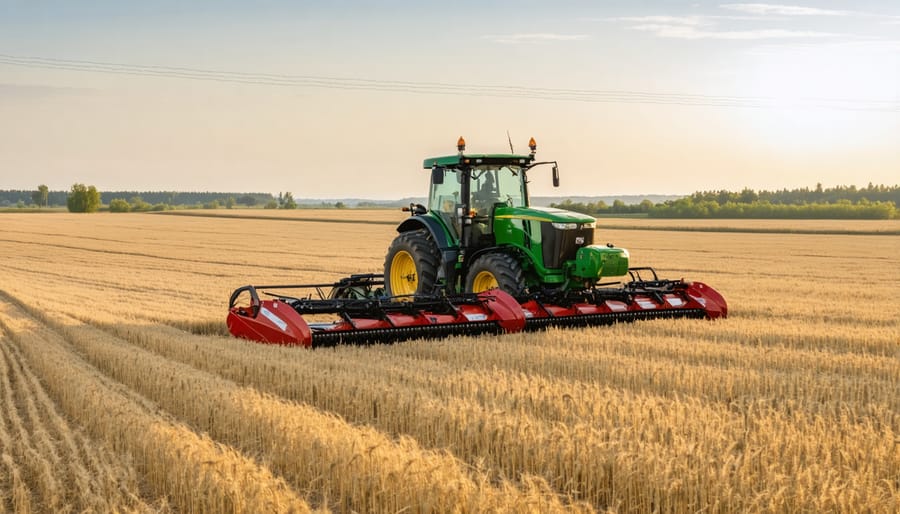
Data-Driven Farming Decisions
Modern farming has evolved beyond traditional decision-making based on intuition and experience alone. Today’s Canadian farmers are leveraging the power of data analytics and artificial intelligence to make more informed choices about their operations.
In Alberta, precision agriculture systems are collecting vast amounts of data through soil sensors, weather stations, and satellite imagery. This information helps farmers determine optimal planting times, irrigation schedules, and fertilizer applications with unprecedented accuracy. For instance, the Smart Farm initiative at Olds College demonstrates how combining field sensors with AI-powered analytics can reduce water usage by up to 20% while maintaining crop yields.
Real-time monitoring systems now allow farmers to track livestock health, crop growth patterns, and equipment performance from their smartphones. These systems can predict potential issues before they become problems, from early detection of plant diseases to identifying optimal harvest windows.
Machine learning algorithms are helping farmers analyze years of historical data alongside current conditions to forecast crop yields and market trends. This technology enables better planning for resource allocation and more strategic decision-making about what crops to plant and when to sell.
The integration of big data in agriculture isn’t just about technology – it’s about building more resilient and sustainable farming operations. By understanding patterns in weather, soil conditions, and crop performance, farmers can adapt their practices to changing climate conditions while optimizing their resource use.
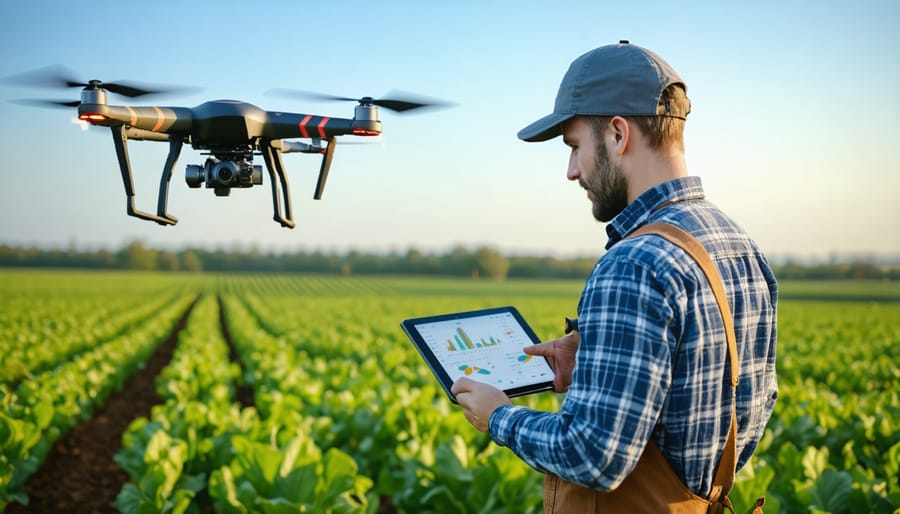
Sustainable Innovation Practices
Soil Health Management
Modern soil health management represents a cornerstone of sustainable farming practices that’s revolutionizing Canadian agriculture. Here in Alberta, farmers are embracing innovative approaches that go beyond traditional tillage and fertilization methods.
One significant advancement is the implementation of precision soil mapping technology, which allows farmers to create detailed nutrient profiles for different field sections. This data-driven approach helps optimize fertilizer application and reduce waste while improving crop yields.
Cover cropping has evolved significantly, with farmers now using specific plant combinations to address multiple soil health objectives. For instance, mixing deep-rooted crops like tillage radish with nitrogen-fixing legumes helps improve soil structure while building organic matter content.
Advanced soil conservation techniques now include biological amendments and beneficial microorganism applications. Many Alberta farmers are incorporating beneficial fungi and bacteria to enhance nutrient cycling and build natural disease resistance in their soils.
Innovative moisture management systems, including smart irrigation and soil moisture sensors, help maintain optimal growing conditions while conserving water. These technologies are particularly valuable in our prairie regions, where moisture management is crucial for successful crop production.
The integration of regenerative grazing practices with crop rotation has shown impressive results in building organic matter and improving soil structure. Local success stories demonstrate how planned grazing can restore degraded soils while maintaining profitable operations.
This shift towards holistic soil management represents a key innovation in modern agriculture, combining traditional knowledge with new technologies to create more resilient and productive farming systems.
Water Conservation Techniques
In today’s agricultural landscape, innovative water management solutions are revolutionizing how Canadian farmers approach irrigation and conservation. Prairie farmers are increasingly adopting precision irrigation systems that use soil moisture sensors and weather data to optimize water delivery. These smart systems can reduce water usage by up to 30% while maintaining or improving crop yields.
Variable Rate Irrigation (VRI) technology has gained significant traction in Alberta, allowing farmers to customize water application rates across different zones within the same field. This approach accounts for variations in soil type, topography, and crop needs, ensuring every drop counts.
Subsurface drip irrigation is another game-changing technique that’s proving particularly effective in water-stressed regions. By delivering water directly to crop root zones, this method minimizes evaporation losses and can achieve efficiency rates of up to 95%, compared to 60-70% for traditional sprinkler systems.
Many Alberta farmers are also implementing innovative water capture and storage solutions, such as modernized dugouts with enhanced sealing techniques and covered storage to reduce evaporation. These systems often integrate with snow fence technology to maximize winter precipitation collection, providing a reliable water source during dry periods.
Soil health management plays a crucial role in water conservation. Farmers are incorporating cover crops and implementing minimum tillage practices to improve soil organic matter content, which enhances water retention capacity. For every 1% increase in organic matter, soil can hold an additional 25,000 litres of water per hectare.
These water-smart innovations are helping Canadian farmers build resilience against climate variability while maintaining productive and sustainable operations.
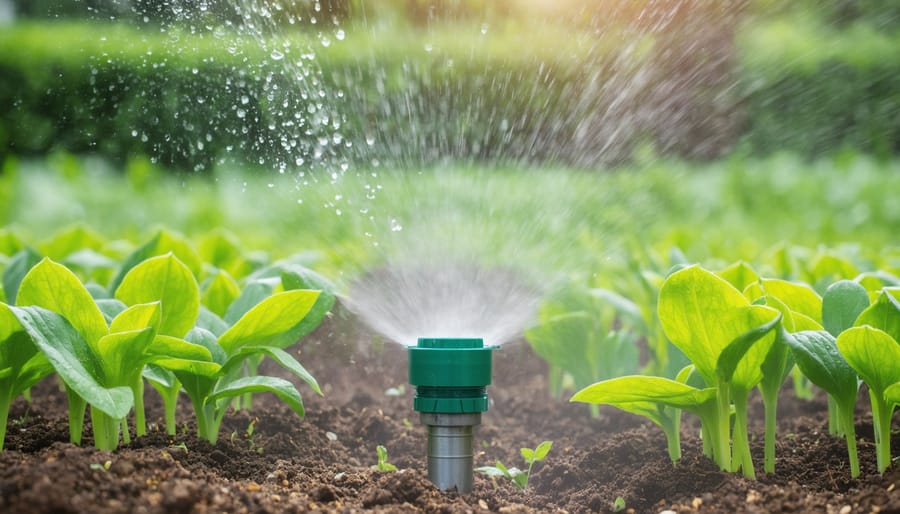
Real Success Stories from Alberta’s Fields
Alberta’s agricultural landscape is rich with inspiring stories of innovation and success. Take Tom and Sarah Henderson from Lethbridge County, who revolutionized their 2,000-hectare farm by implementing precision agriculture technology. Using soil sensors and GPS-guided equipment, they reduced water usage by 30% while increasing crop yields by 25% over three years.
In the Peace River region, Marcus Wong’s family farm became a model for sustainable practices through their innovative crop rotation system. By integrating pulse crops and implementing zero-till practices, they’ve improved soil health significantly while reducing fertilizer costs by 40%. Their approach has inspired neighboring farms to adopt similar methods, creating a ripple effect of positive change across the region.
The Stevenson Sisters in Red Deer County showcase how innovation isn’t always about high-tech solutions. Their regenerative grazing system, which rotates cattle through small paddocks every few days, has restored 400 hectares of previously degraded pastureland. This method has increased their carrying capacity by 60% and eliminated the need for chemical fertilizers.
Near Medicine Hat, the Martinez Family Farm demonstrates the power of innovative greenhouse technology. Their vertical farming system, powered by renewable energy, produces fresh vegetables year-round. Despite Alberta’s challenging climate, they’ve created a successful four-season growing operation that supplies local markets and restaurants, reducing food transportation emissions and creating new revenue streams.
Perhaps most inspiring is the story of the Prairie Collective, a group of five farms near Camrose that pooled resources to invest in shared smart farming equipment. This cooperative approach allowed them to access technology that would have been cost-prohibitive individually. Their shared data network has improved decision-making across all participating farms, leading to an average 35% increase in operational efficiency.
These success stories share common threads: careful planning, willingness to take calculated risks, and strong community connections. They demonstrate that agricultural innovation comes in many forms, from high-tech solutions to creative management practices, and that success often stems from adapting innovations to local conditions and needs.
The impact extends beyond individual farms, fostering resilient agricultural communities and inspiring the next generation of innovative farmers across Alberta.
Agricultural innovation continues to be the driving force behind Canada’s resilient and sustainable farming future. As we’ve seen throughout Alberta and across the country, farmers who embrace new technologies and sustainable practices are better positioned to overcome challenges while maintaining profitable operations. The impact of these innovations extends far beyond individual farms, contributing to food security, environmental stewardship, and the economic vitality of rural communities.
Looking ahead, the future of agricultural innovation in Canada appears promising, with emerging technologies like artificial intelligence, precision agriculture, and regenerative farming practices gaining momentum. These advancements are particularly crucial as we face challenges such as climate change, labour shortages, and increasing global food demand.
The success of agricultural innovation relies heavily on collaboration between farmers, researchers, industry partners, and government agencies. By sharing knowledge, resources, and experiences, our farming community can accelerate the adoption of beneficial practices and technologies. The commitment to innovation shown by Canadian farmers, particularly in regions like Alberta, demonstrates their resilience and forward-thinking approach.
As we move forward, maintaining this innovative spirit while preserving our agricultural heritage will be key. Whether it’s implementing smart farming solutions, adopting sustainable practices, or developing new crop varieties, agricultural innovation will continue to shape the future of farming in Canada, ensuring our position as a global leader in sustainable agriculture.

